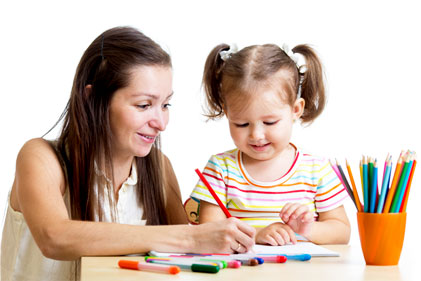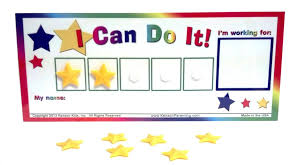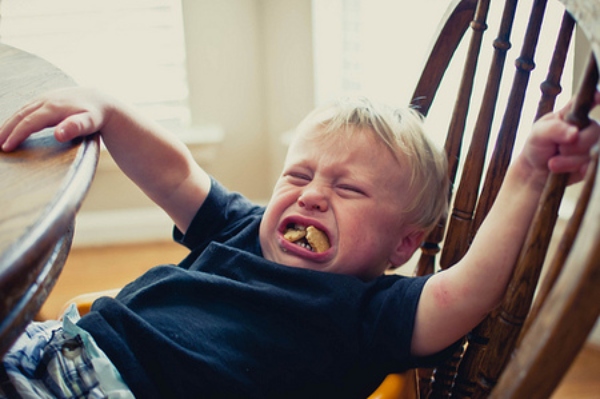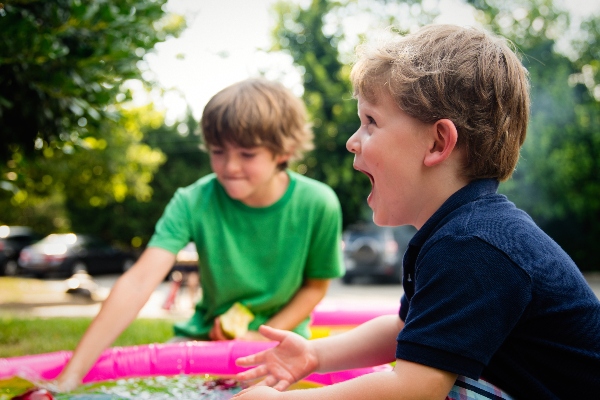What are Multiple-Step Tasks?
Dressing, toileting, grooming, bathing, household chores, leisure, and cooking tasks all take multiple steps to complete. Some examples include putting on a shirt, washing your face, brushing your teeth, washing clothes, playing a video game, completing a puzzle, and making a meal or snack.
Preparing for teaching
Breaking up the task into steps
Break up the task you want to teach into small steps. For example, if you want to teach your child to make a sandwich, go through the process yourself and note all the steps you need to follow. The steps may look something like this: get a plate, get the turkey and mustard, get the bread, get a knife, spread the mustard on the bread, put the turkey on the bread, put a second slice of bread on the turkey, put turkey, mustard and bread away, put knife in sink, eat! The steps for washing face may include: turning on the water, wetting face, getting soap, putting soap on face, rinsing face, turning water off, drying face. If you find your child needs more steps along the way then feel free to add them. If your child continues to have trouble putting soap on their face thoroughly then you may need to break it into a few steps such as putting soap on forehead, putting soap on cheeks, putting soap on nose, and putting soap above lip and chin.
Materials
Prior to teaching you want to make sure all the necessary materials are in the location where the task will be completed and accessible to the child. The goal is to have the child get everything themselves so they can learn to complete the task independently. Your child will learn to obtain the materials from where they are kept but need to be able to reach the items. The location for each item should also stay the same. For example, the face wash should always be kept on the second shelf in the cabinet in the bathroom. This will help your child gain independence more quickly.
Teaching
Steps to follow
You want to turn the steps you listed into something your child can follow. This may be a written list of steps including words, short phrases, or pictures for nonreaders. Pictures can be anything that could signal to the child what they need to do. The list needs a marker to indicate what step the child is on. The easiest way is to have the child write a check mark next to each step as they complete it, but a magnet marker with magnet tape next to each task on the list is also useful for bathroom tasks. If you have a younger child or your child has difficulty following a list of steps, you could use a binder with multiple pages and present one step per page.
The steps should be visible while the child is completing the activity. The wash face steps could be mounted on the wall in the bathroom or taped to the mirror. If the steps cannot be fixed to a spot where the child completes the task then you can teach your child to obtain the list prior to starting the activity. You can have the first step of the activity be getting the steps from the location where the list is kept.
Teaching your child what each step means
Whether the list includes words or pictures, you will need to teach the child what each step means. Physical prompts are the best way to do this while promoting independence. You want to be the guiding hand that teaches your child to complete each step. Stand behind your child, and use your hands on top of their hands. This means, use your hands to prompt their hands to pick up the list of steps or point to the first step, obtain the materials needed to complete the step and complete the step correctly. Then prompt the child to go back to the list, check off the completed step, read the second step, and so on.  This may not be required for all children. If your child has experience following lists and can complete some steps independently from the start then you can stay back and step in when needed. You want to try not to intrude in the activity. Try to limit what you say and how much you engage with the child. Remember, the ultimate goal is for your child to be independent so you want to make your presence insignificant so when you are no longer there it is easy for your child to complete the task.
This may not be required for all children. If your child has experience following lists and can complete some steps independently from the start then you can stay back and step in when needed. You want to try not to intrude in the activity. Try to limit what you say and how much you engage with the child. Remember, the ultimate goal is for your child to be independent so you want to make your presence insignificant so when you are no longer there it is easy for your child to complete the task.
What should teaching look like?
Ideally to start you want to be in the room where the child needs to complete the task (e.g., bathroom for wash face, kitchen for making a sandwich.) You can present a direction (i.e., “Wash your hands” or “Make a sandwich”) which signals to the child they should retrieve the steps or physically prompt them to start following the list without a direction. You can leave out the direction if the task should naturally occur at certain times. For instance, the child should always wash their hands after using the restroom therefore you want the act of using the restroom to signal to the child to wash their hands, not your direction. Once the child has the list of steps, they should read step 1 or look at the picture, complete the step, return to the list, check off step 1, read step 2, and so on. If at any point the child makes an error, you are going to step in and guide the child to complete the part they erred on. This continues until the task is completed.
Fading Prompts
In order for your child to be completely independent, you may need to fade the prompts you use. If you are finding you continually need to assist them with the same steps and they don’t seem to be acquiring certain steps as quickly as others, try changing the prompt you use by slowly decreasing the level of assistance. Hand-over-hand prompts, as described above, provide the most help. After helping your child with hand-over-hand prompts for a few opportunities, try guiding them at their forearm, at their elbow, then just by touching their shoulder. If they continue to be successful then try just shadowing them by standing behind them without touching them. Then you can increase the amount of distance between you and your child. Allow 3-5 opportunities at each prompt level prior to moving to the next. If errors are made then the next opportunity to follow the steps, go back to the previous fade step. If you were touching their shoulder and they continue to error, go back to prompting at the elbow. While fading prompts for the entire list or certain steps, you will want to keep track of what prompt you are using for each step. Each time the child practices the activity, write down what prompts you are using.
Data Collection
Why collect data
Data provide a visual for you to look at to easily see how your child is doing and if they continue to error on the same step. If they are having difficulty with a particular step, you can modify it by breaking it up into smaller steps or start fading prompts during teaching as described above to promote success.
How to collect data
You want to collect data on each step. You can use the same list you gave to your child. The easiest way is to just score a plus (+) next to steps they complete correctly by themselves and minus (-) next to steps you help them complete (see table below). With this method of data collection, you only want to collect data about once every 3-5 opportunities of completing the task. You want to step back and see what they can do without your help. Once they start to error on a step, score a minus on your data sheet, then go in to provide a prompt so they can complete the step. This way they have the opportunity to complete the subsequent steps. When you are not collecting data, you are teaching by preventing errors when possible with physical prompts.
Identifying mastery
Now that data are collected, calculate a percentage by dividing the number of steps they completed independently (scored +) by the total number of steps and multiply by 100. This gives you the percentage correct. For the wash face example above, 4 steps were completed independently out of a total of 7 steps so the percentage correct would be 57%. Decide what percentage is needed is appropriate for the task they are completing. Generally, hygiene and other self-care tasks should be completed with 100% accuracy. If they skip a step with washing their hands for example, then their hands might not be clean or they may be covered in soap, etc. Some leisure skills may have room for some error so 90 or 80% accuracy may be acceptable for the child as long they are able to engage in the entire activity independently.
Check out our blog on teaching your child to wash their hands and our webinar on teaching independence. Or sign up for our workshop here and earn a CE!
Interested in starting services? Contact us to get the process started!













